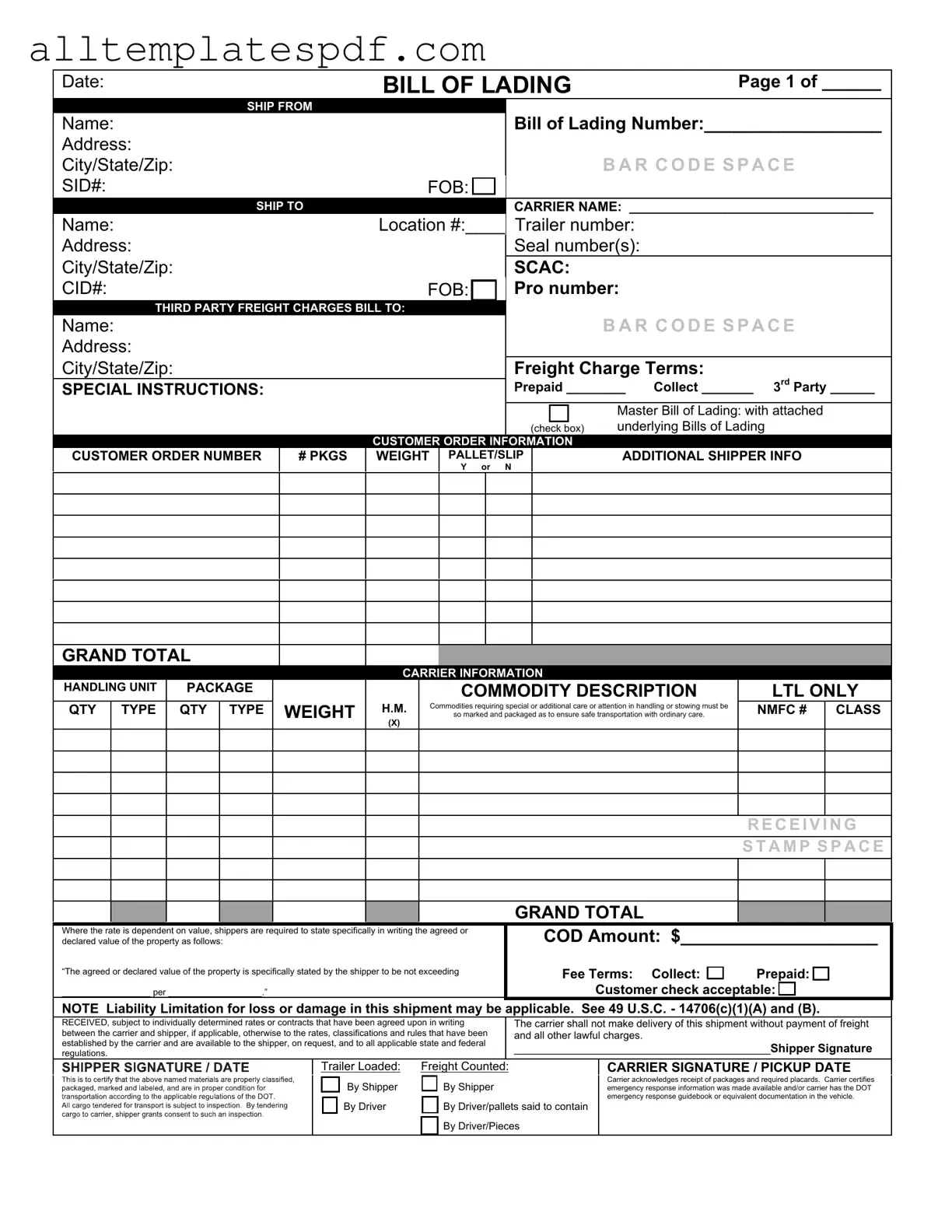Filling out a Bill of Lading with a Supplement form can be a straightforward process, but many people make common mistakes that can lead to complications. One frequent error is failing to provide complete and accurate information. Each section of the form is essential, and missing details can create confusion or delays in the shipping process.
Another mistake is neglecting to double-check the shipment's weight and dimensions. Accurate measurements are crucial for determining shipping costs and ensuring compliance with regulations. Inaccurate data can result in unexpected charges or even rejected shipments.
Many individuals also overlook the importance of clearly identifying the consignee. It’s vital to ensure that the recipient's name and address are correct. If the information is unclear or incorrect, it can lead to delivery issues, causing frustration for both the sender and recipient.
In addition, some people forget to include special instructions or handling requirements. If a shipment requires specific care, this information should be clearly stated on the form. Without these instructions, carriers may not handle the shipment as needed, potentially damaging the goods.
Another common error is not signing the Bill of Lading. A signature is often required to validate the document. Without it, the form may be considered incomplete, leading to potential disputes or delays.
Additionally, individuals sometimes use vague descriptions of the goods being shipped. A clear and detailed description is necessary for customs and other regulatory bodies. Ambiguities can lead to delays in processing or even fines.
People also occasionally forget to keep copies of the completed form. Retaining a copy is important for tracking shipments and resolving any issues that may arise later. Without a copy, it becomes challenging to reference the original details.
Lastly, some individuals may not be aware of the specific requirements for different carriers. Each shipping company may have unique guidelines for completing the Bill of Lading. Familiarizing oneself with these requirements can help avoid mistakes that could disrupt the shipping process.
